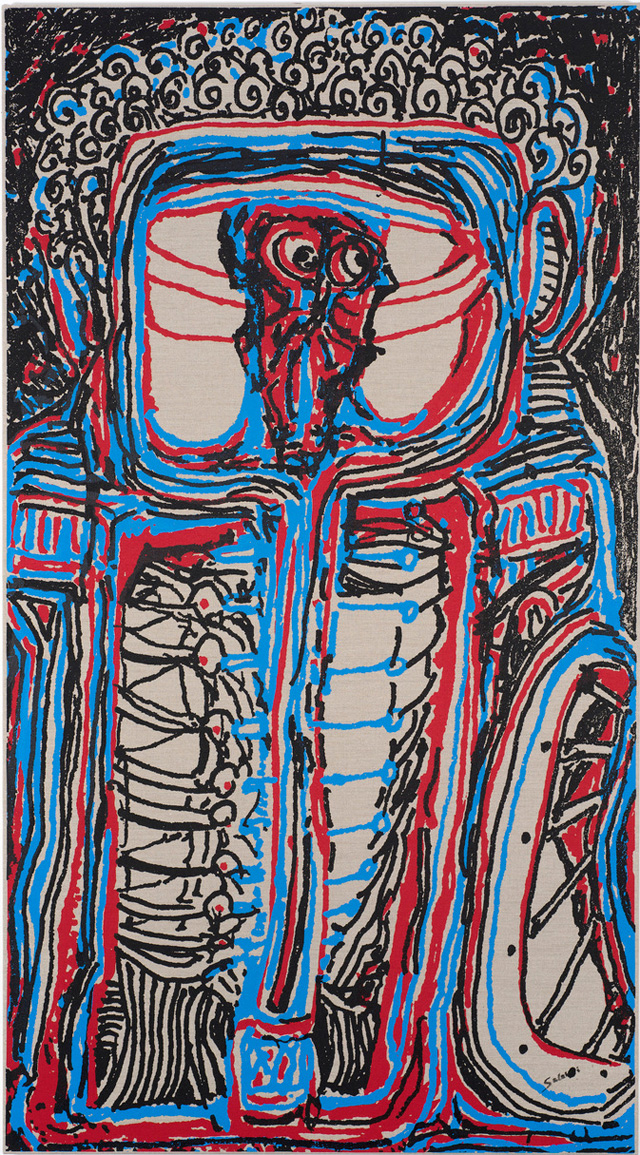28/06/19
Interview with Ibrahim El-Salahi
Pain Relief
Saatchi Gallery, London
7 June – 18 July 2019
While the main part of Saatchi Gallery, London, is closed for installation, I – somewhat ironically – pop along to visit Pain Relief, a one-room exhibition by the Oxford-based, Sudanese artist Ibrahim El-Salahi (b1930). I say “ironically”, since, thanks to a sprained ankle, I am on crutches and have to hobble up and down numerous staircases, taking the back entrance to the gallery – rendering my own myriad forms of pain relief less than adequate. Nevertheless, the end goal is worth it: a splendid 13 large canvases – mainly monochrome in black and white, with some blue and red – depicting abstracted figures, some quite Arabic, some more western and Paul Klee-like, and others appearing to grow roots, stretching far into the ground on which they stand, asserting their physicality and corporality.

The canvases – unique monoprint paintings – have been transferred through silkscreen gauze from El-Salahi’s small-scale drawings in pen and ink, made on the inside of the packets of medications the 88-year-old artist takes for sciatica and chronic back pain. Fourteen of these original drawings are on display in a vitrine, looking at first glance like intricate doodles in comparison to the much more minimalist and bare large-scale canvases. My own favourite, Pain Relief (2019) – on display in both forms – is a blue, black and red work, depicting a head and torso, with the rib cage detailed to show each joint and its connection to the spine. On the righthand-side, a wheel-like construction, and, at the top, squirls and swirls, symbolise, for me, the concentrated, continual cycle of chronic pain.
In an essay in a new publication on Francis Bacon, Semir Zeki, a professor of neuroaesthetics, discusses the brain’s privileged facility for recognising bodies and faces in preference to other objects, even when they are distorted or mutilated. He also acknowledges our unconscious ability to read the emotion of fear. These observations seem to more than carry over to El-Salahi’s work, with its uncomfortable, discomfited figures and the emotion, or feeling, of pain – recognisable universally and instinctively.
I spoke to El-Salahi by email as he prepared for the exhibition.
Read the interview for Studio International here